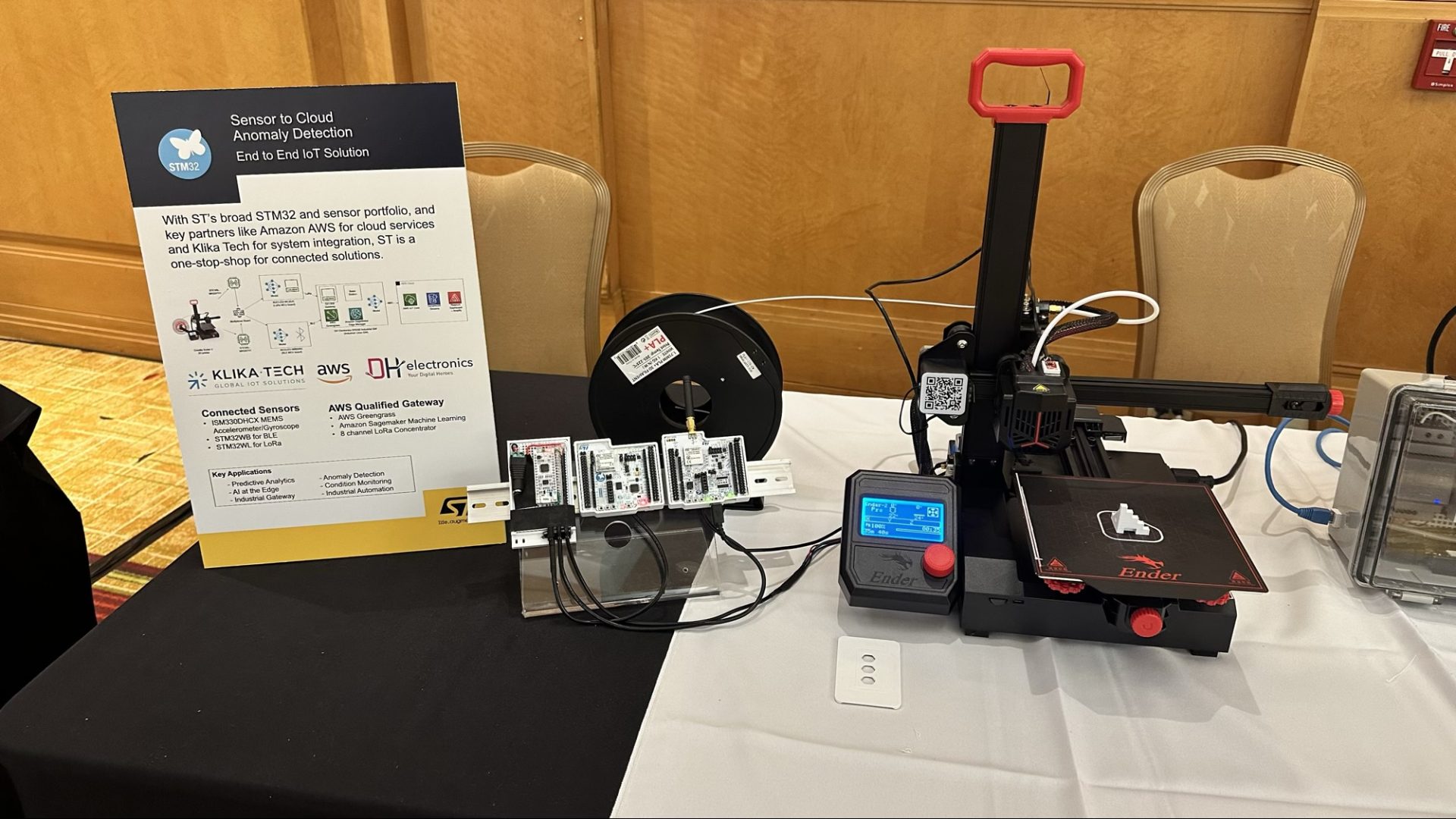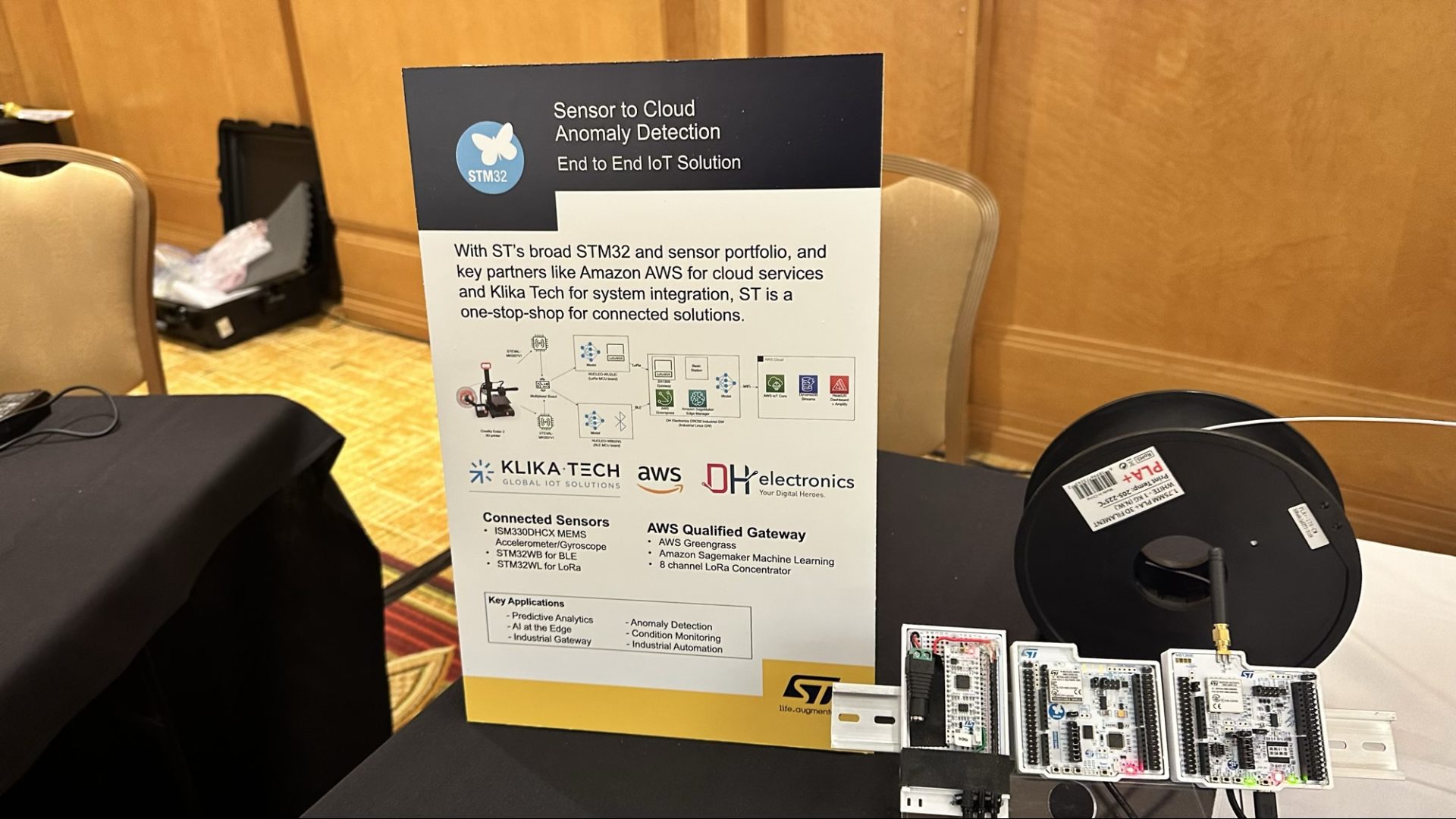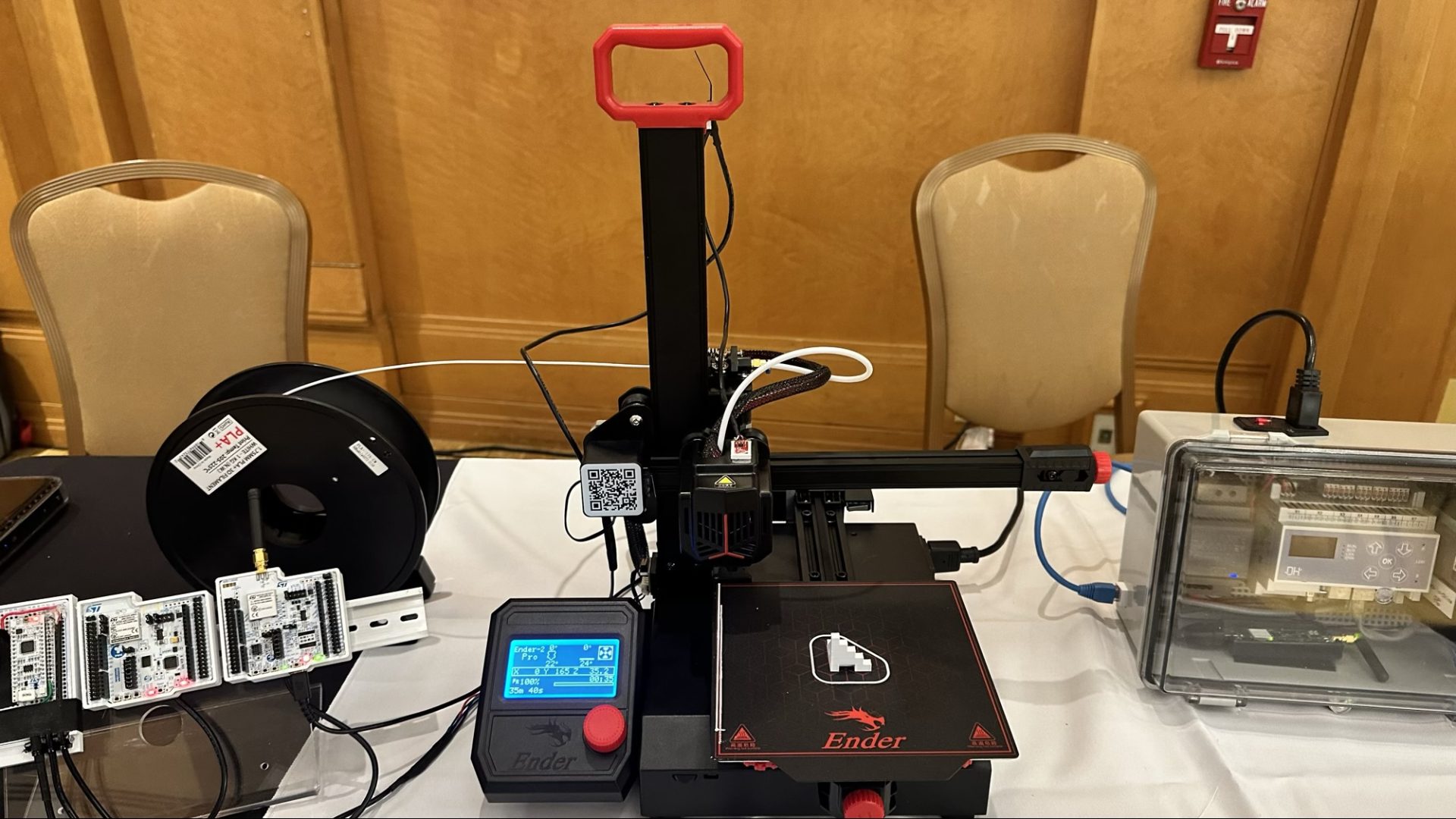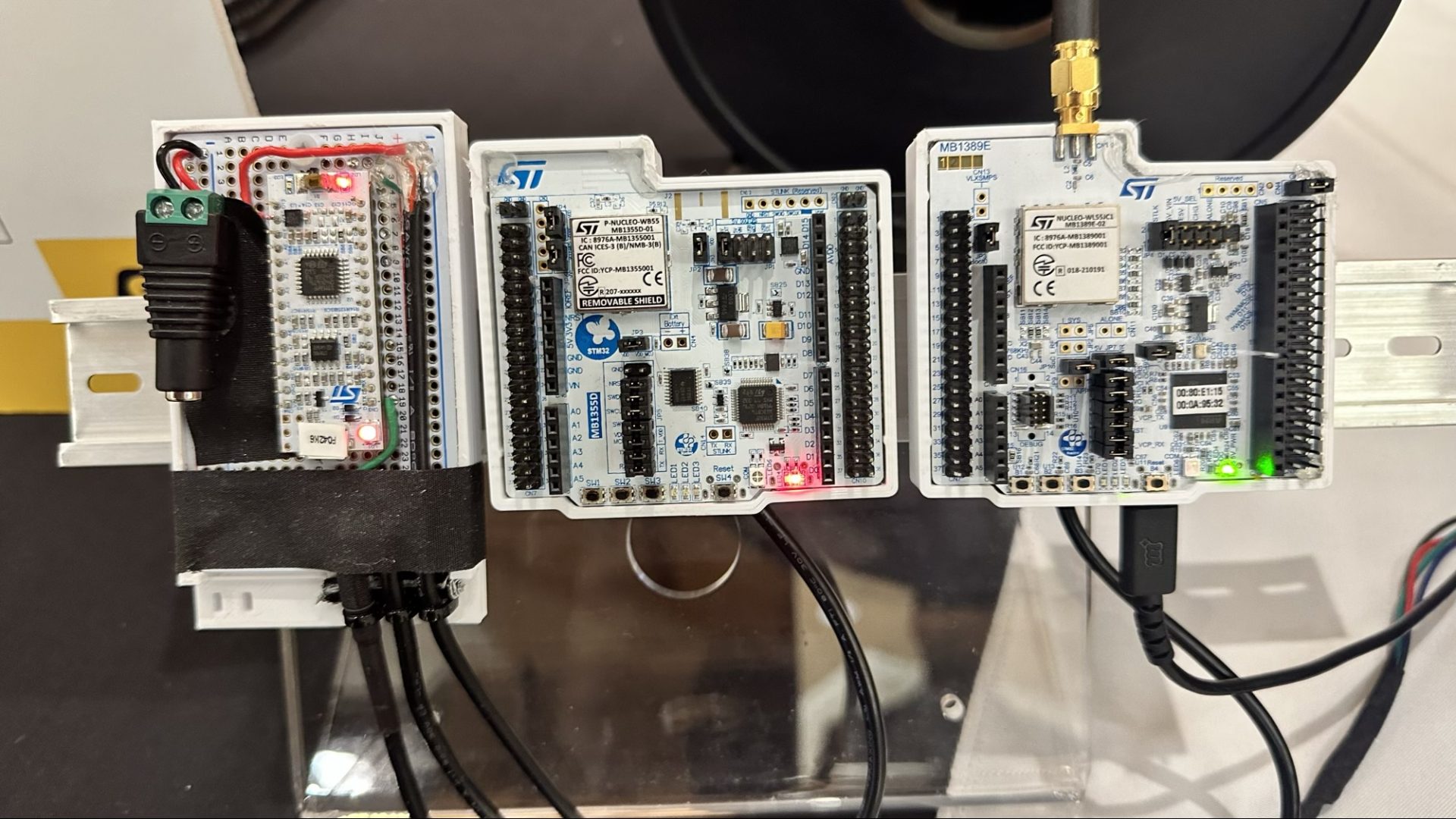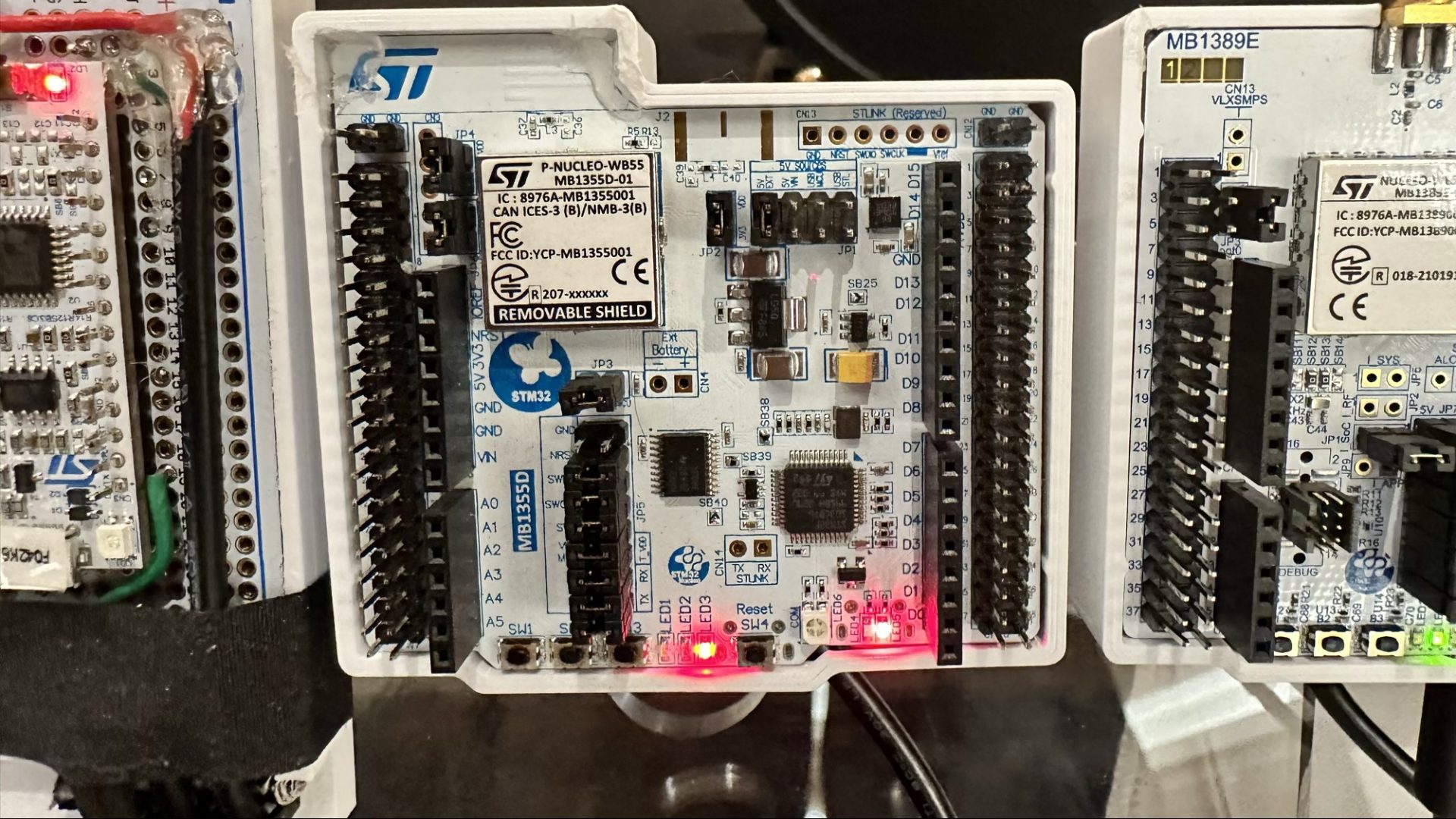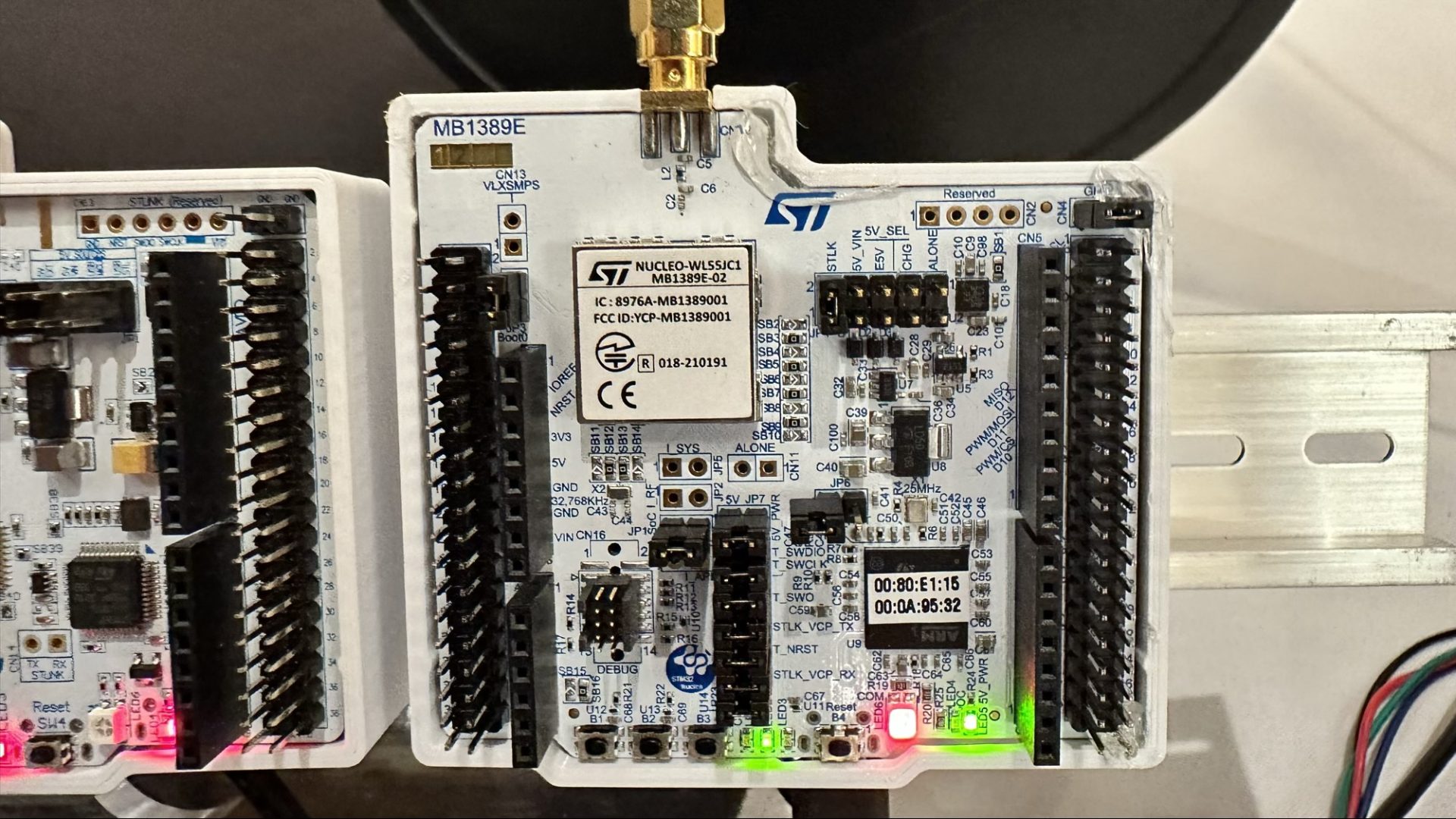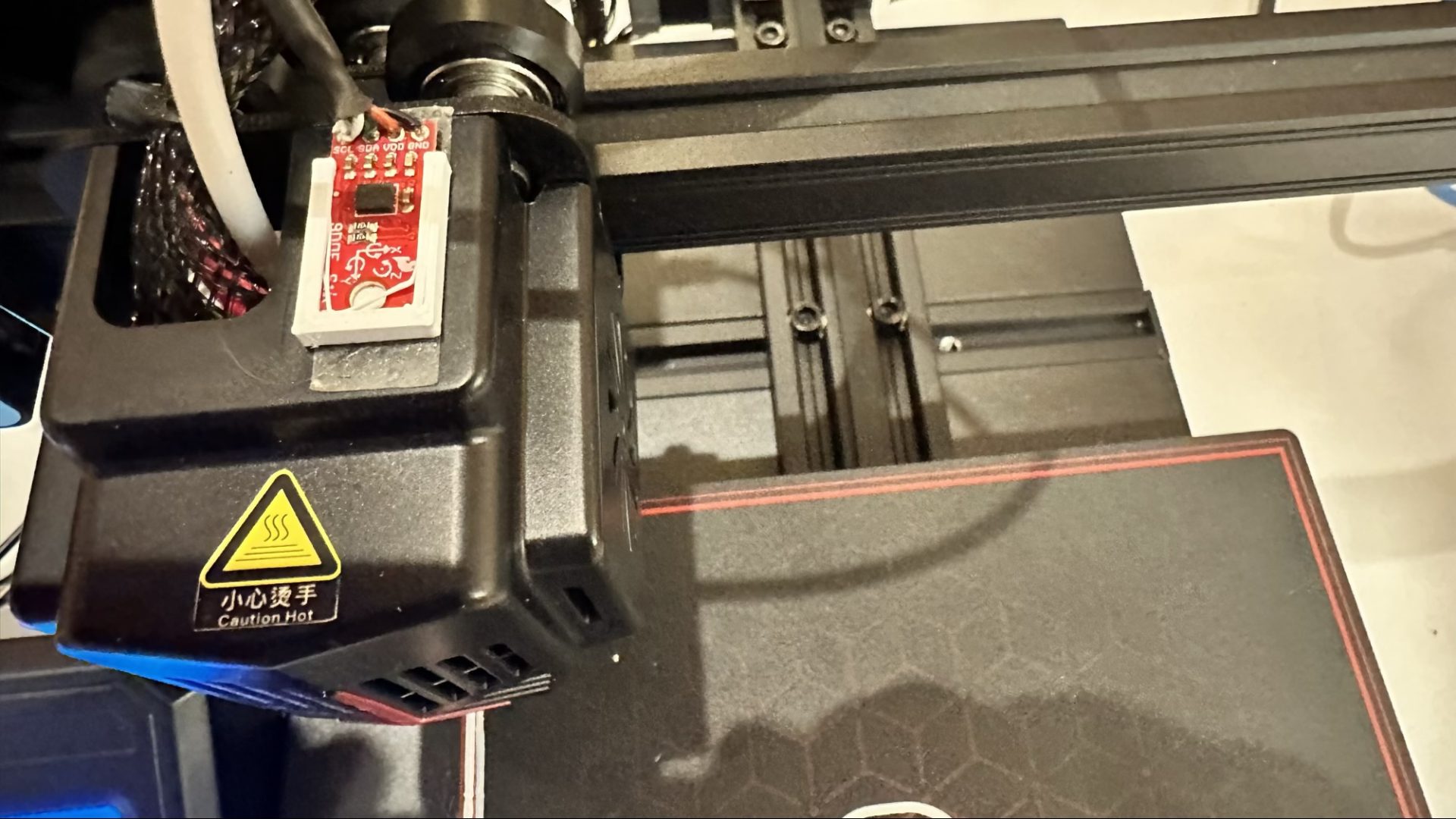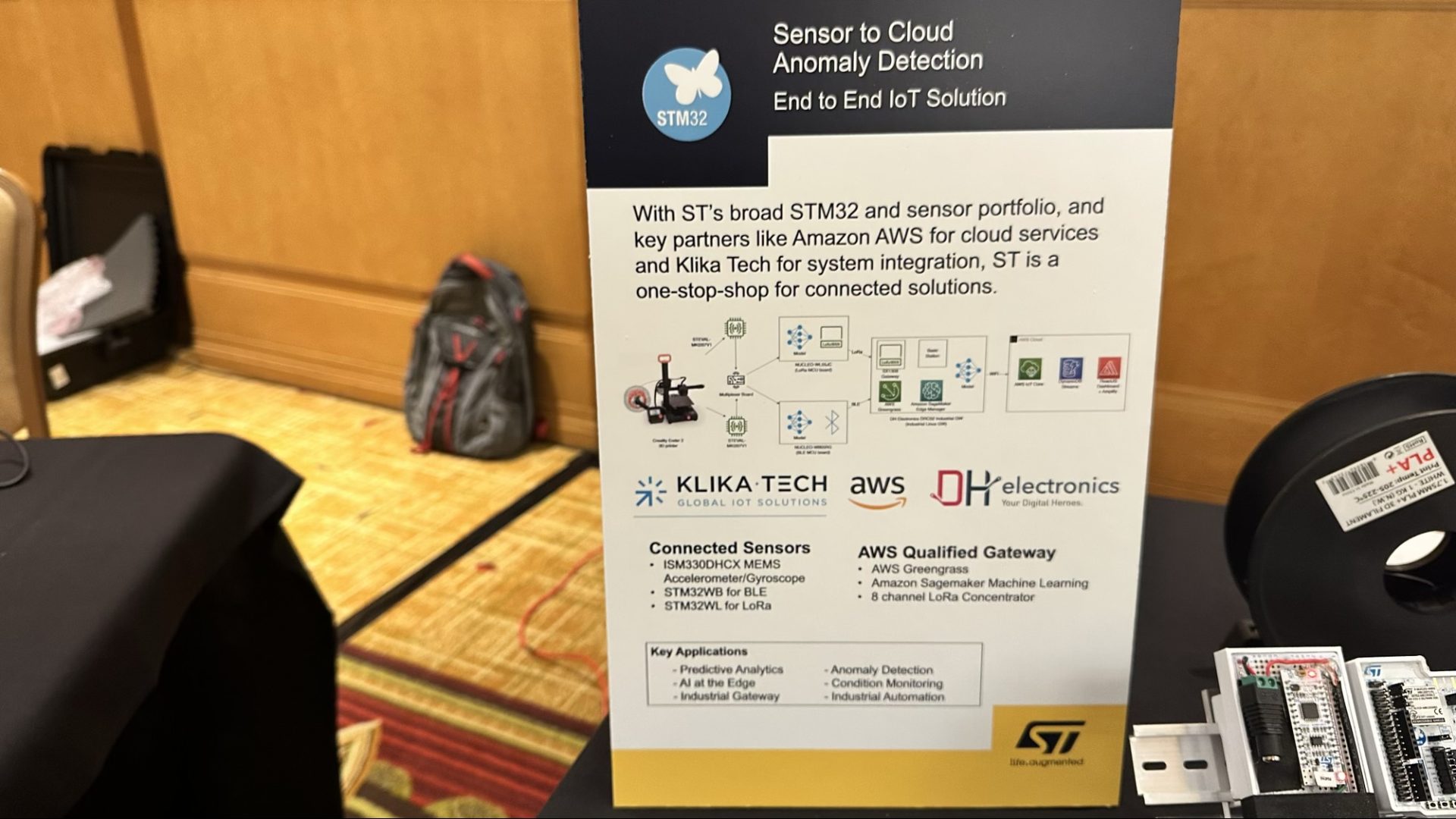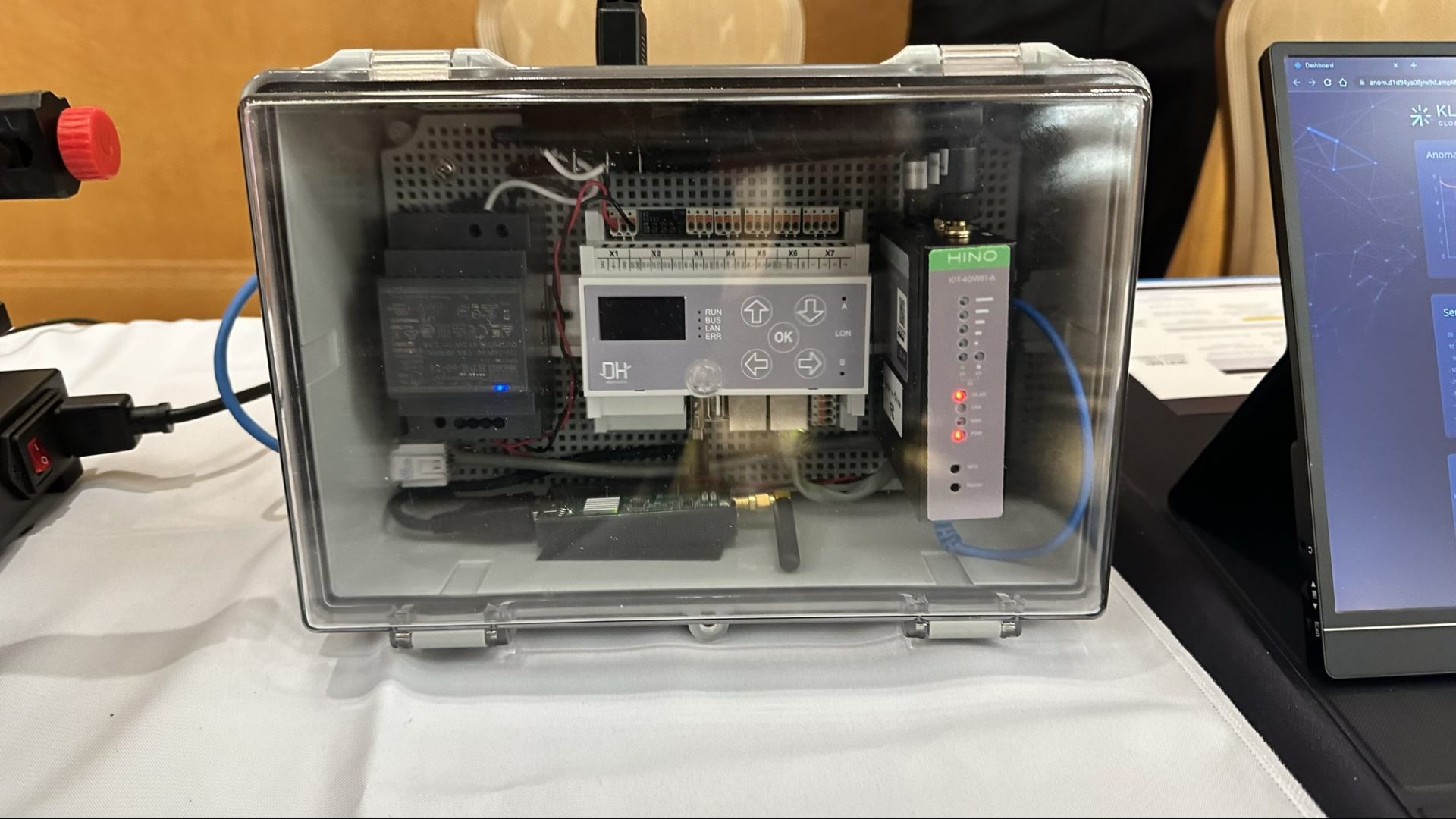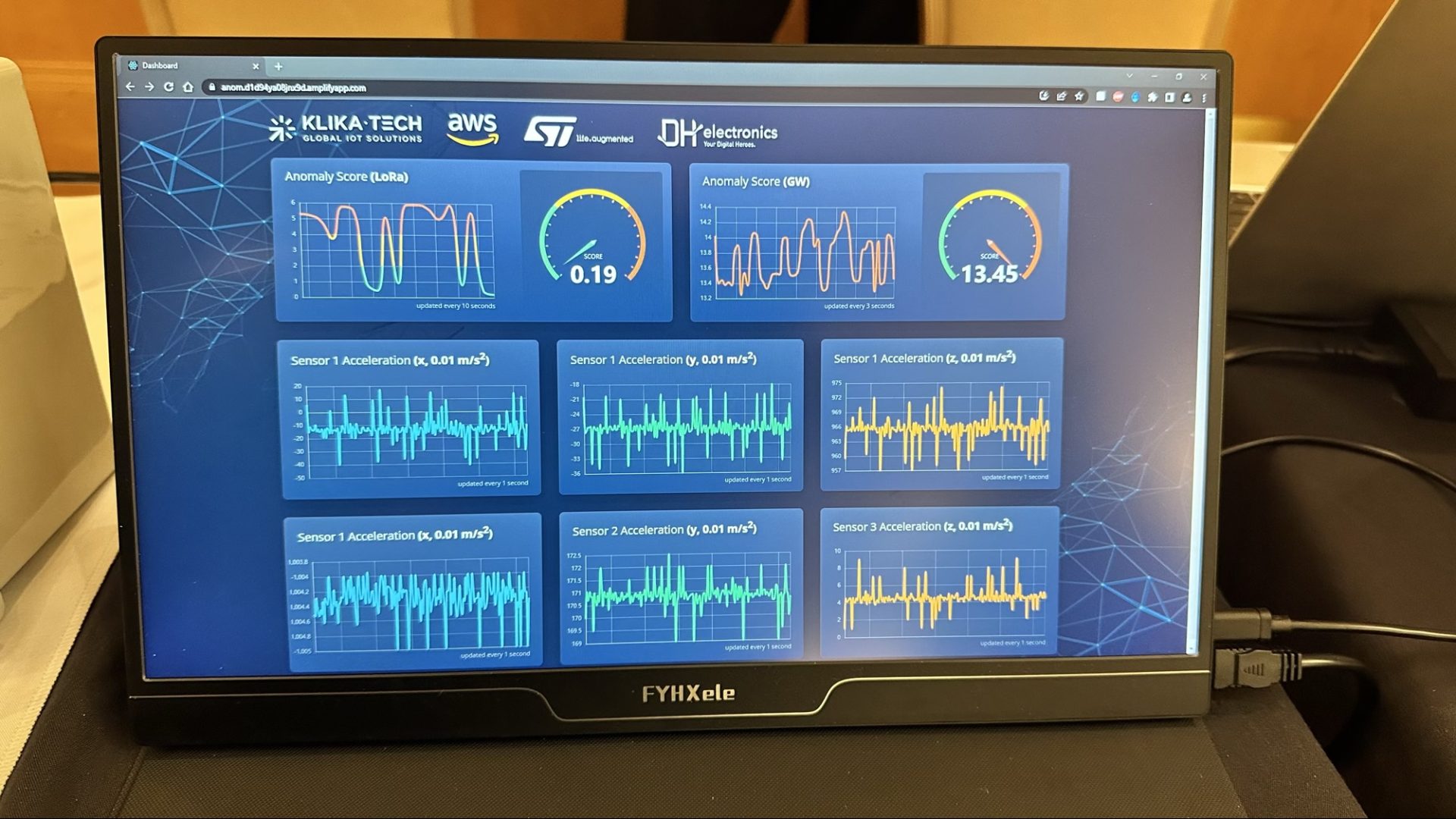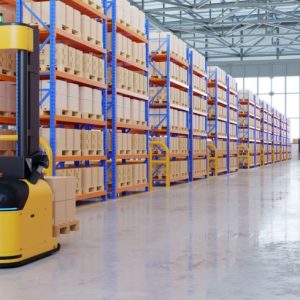If you thought one machine learning algorithm on an embedded system was impressive, check out how Klika Tech, a member of the ST Partner Program, is rethinking AI at the edge by creating models that interact with one another. We saw Klika Tech at the ST Technology Tour 2023 in Toronto. The ST Authorized Partner created a machine-learning application that checked for slack in a 3D printer’s belt. It ran on an STM32WL and leveraged cloud connectivity thanks to AWS and an STM32MP1 gateway from DH electronics, which ran an alternate inference model.
More models, more problems
The need to run multiple models in one application
Avid readers will recall that MathWorks, another ST Authorized Partner, explained how AI at the edge needed to run multiple neural networks to gain traction in more industries. The rationale is simple: many machine learning algorithms can produce something greater than the sum of its parts. For example, when developers run a simple anomaly detection and then a vibration analysis before sending data to the cloud, users experience greater accuracy and a vastly more capable system. Instead of monitoring a narrow set of issues, a more complex system can offer a vastly broader scope while remaining cost-effective by employing embedded systems instead of expensive GPUs.
The challenge of running multiple neural networks at the edge
The challenge is that running multiple neural networks increases development complexity. At the Toronto event, Klika Tech used a TinyML framework on the STM32WL and utilized SageMaker on the STM32MP1. Put simply, no one-size-fits-all approach exists, especially when AI at the edge depends on software optimizations. Hence, when does it make sense to use STM32Cube.AI? When should developers rely on cloud computing? And why should they use an MCU or an MPU? These are just a few of the questions that teams must research as they expand the capabilities of their neural networks.
The light at the end of the cloud
The Klika Tech end-to-end approach
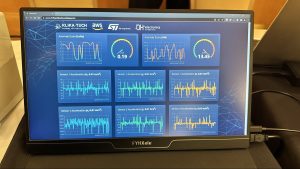
To answer these questions and solve these issues, Klika Tech focuses on an end-to-end approach. The company works closely with ST and members of the ST Partner Program, like DH electronics, to start at the edge, earning them the AWS Innovation Partner of the Year award for its work on the cloud platform. ST also works closely with AWS to make machine learning increasingly more capable, as we demonstrated when LACROIX published its audio classification system. In a nutshell, Klika Tech exemplifies our approach to AI at the edge with their end-to-end systems that solve design challenges by incorporating our MCUs, MPUs, and AWS.
The anomaly detection example
Let’s take the example of the anomaly detection demo showcased at the ST Technology Tour in Toronto. Two Nucleo boards ran sensors placed onto the 3D printer. The NUCLEO-WL55JC ran a TinyML model and sent the results to AWS using LoRa. The P-NUCLEO-WB55 sent the results of an accelerometer to the gateway using Bluetooth to feed a model running on the gateway. As a result, Klika Tech bypassed memory or compute limitations to create a system that performs ongoing optimizations. The application also managed to unify data for greater efficiency. Instead of having segregated systems, they all come together before moving to the cloud.
The many sensors example
Another example is Klika Tech’s use of STM32Cube.AI to process sensor data locally. In this setup, the company collects data using multiple SensorTile.box systems, which send their information to a Nucleo board with a Bluetooth transceiver, the NUCLEO-WBA52CG, thanks to AWS Sidewalk, a communication protocol for low-bandwidth long-range setups. In return, that board sends its data to the NUCLEO-WL55JC, which runs a neural network optimized by STM32Cube.AI. This last Nucleo board transmits data to the cloud via Amazon Sidewalk. As a result, Klika Tech can vastly optimize its cloud usage. The end-to-end system reduces the amount of data uploaded, while the Amazon gateway helps scale operations over greater distances.
The water metering application
Klika Tech even deployed a similar implementation using an ST MCU and AWS Sidewalk in water meters designed by Subeca, demonstrating that the application has real-world implications. By offering an end-to-end infrastructure, the ST Authorized Partner significantly increased the number of sensors in the field. Consequently, Subeca had a significantly more positive impact on sustainability because it could use more sensors, collect better data, and benefit from a more efficient way of bringing it all together. It leveraged machine learning at the edge to use cloud computing optimally, which opened the door to far more powerful and capable applications.



